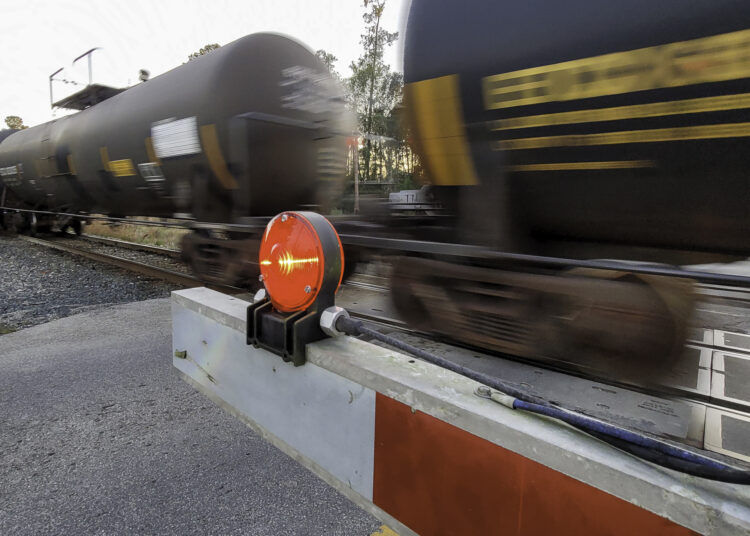Three lobbying groups representing state and local governments are pushing Senate leaders to bring the rail safety bill to the Senate floor for a vote.
The executive directors for the National Governors Association (NGA), the National League of Cities (NLC) and the National Association of Counties (NaCo) are pressing Senate Majority Leader Chuck Schumer of New York and Senate Minority Leader Mitch McConnell of Kentucky to bring the Railway Safety Act of 2023 to the Senate floor for debate.
The bill passed the Senate Commerce Committee on May 10 mostly along party lines.
The three groups called for the Senate to debate and vote on the bill, citing blocked crossings and the potential for future derailments with a magnitude similar to the one that had occurred in East Palestine, Ohio, in early February.
“Without Congress’ help to secure passage of this bipartisan legislation, the U.S. Department of Transportation and state and local governments cannot move forward important oversight actions nor identify the full threat for our first responders,” said a letter dated Tuesday to the two Senate leaders. “Each derailment is a potential disaster, and Congress should not wait any longer to act on bipartisan rail safety legislation that addresses key rail issues using reasonable and clear solutions.”
Since the bill was first introduced by a bipartisan group of senators, including Ohio Sens. J.D. Vance, a Republican, and Sherrod Brown, a Democrat, in response to the Feb. 3 derailment of a Norfolk Southern train in East Palestine, special interest groups — including rail shippers, rail unions and the railroad industry itself — have been involved in modifying the bill to incorporate both existing safety practices as well as issues that might be more controversial within the industry, such as two-person crews in locomotive cabs.
This latest bill includes a section on blocked crossings calling for the National Academy of Sciences to study the causes of blocked crossings, their impact on local communities and the potential to prevent them.
In addition to potential traffic congestion, local governments view blocked crossings as potentially hindering emergency service providers from being able to respond to incidents quickly.
“As local officials grapple with daily, hours-long blocked crossings, freight trains continue to grow longer — only worsening the issue. We appreciate policymakers’ attention to reducing train delays that will help mitigate this problem. Still, more should be done to protect states and local communities, some of whom must provide emergency services on both sides of a train track because of the frequency and severity of blocked at-grade crossings,” the heads of the three groups said.
Following the Senate Commerce Committee’s passage of the bill, NLC, local leaders of railroad towns and Senate Commerce Committee Chair Maria Cantwell, D-Wash., held a press conference on May 18 urging senators to support the bill.
Separately, NLC has also produced a map using data from the Federal Railroad Administration to show where train derailments have occurred nationwide since 2012.
Subscribe to FreightWaves’ e-newsletters and get the latest insights on freight right in your inbox
Click here for more FreightWaves articles by Joanna Marsh.
Related links:
Rail safety bill passes Senate committee amid GOP resistance
Federal regulators plan broad safety review of all Class I railroads
FRA grants $570M to projects eliminating railroad crossings
The post State, local government officials push Senate to take up rail safety bill appeared first on FreightWaves.














